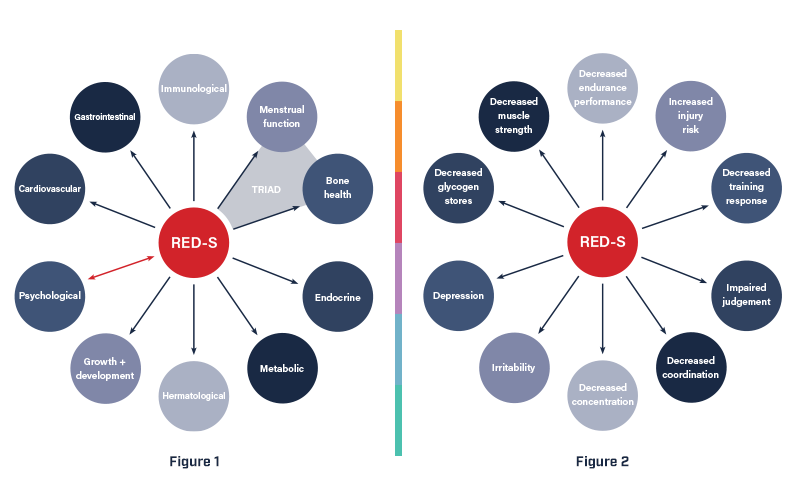Relative Energy Deficiency in Sport (RED-S) is where the body is not taking in enough energy to meet the demands placed on it by the amount of exercise being performed. RED-S was formerly called “Female Athlete Triad” (disordered eating, menstrual disturbance, low bone density). The name was revised to reflect that it occurs in men as well and the impacts are more widespread. RED-S leads not only to insufficient energy for peak sports performance, but also insufficient energy to maintain optimal health causing impairments in heart health, bone health, metabolism, energy, immunity, growth and development, mental health, and your gut. RED-S increases your chance of recurrent infections, overtraining, underperformance, chronic fatigue and increased injury risk. Stress fractures, decreased bone density, and impaired coordination and concentration can mean missing weeks to months of training and competition. If not properly addressed and treated, RED-S can lead to long-term effects including osteoporosis, heart disease, infertility, and psychological/mental health issues such as anxiety and depression. Most of the health consequences from RED-S are reversible when picked up early. An athlete guided by our experienced medical team can expect to see improvements in their overall health, wellbeing, and performance.

RED-S can occur in any sport. Some higher risk individuals are those who are required to diet to enhance performance, are pressured to lose weight, go through frequent weight cycling, overtrain, have recurrent and non-healing injuries, or strict regulations.
The key element to address is the mismatch between energy intake and energy expenditure and to optimize bone health. This varies widely based on the individual’s age, sport, goals, stress-levels, and symptoms. Our expert functional sports medicine physicians understand RED-S and the demands of active, competitive, and elite athletes and will design a treatment plan specific to your needs.

As seen in the figure above, having low energy availability for your body can result in a number of negative consequences on your health and athletic performance.
